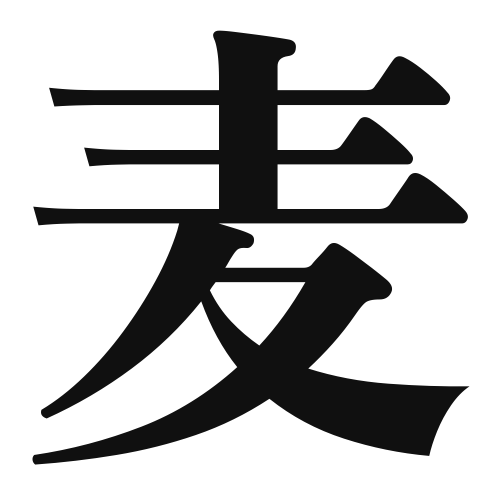1. Overview of Meaning
The kanji “麦” (mugi) means “barley” or “wheat.” It represents a type of grain that is essential in various cultures, particularly in agriculture and food production.
2. Formation and Radical
Formation of the Kanji: The kanji “麦” is a pictogram that visually represents the plant. It is classified as a ideogram because it conveys the idea of grain.
Radical: The radical for “麦” is also “麦,” which is used in other kanji related to grains and cereals.
3. Examples of Usage
Common Words and Phrases: Some frequently used words that include “麦” are:
- 麦茶 (mugicha) – barley tea
- 小麦 (komugi) – wheat
Example Sentences in Daily Conversation:
- 「麦茶は夏に飲むのが好きです。」(I like to drink barley tea in the summer.)
- 「小麦粉でパンを作ります。」(I make bread with wheat flour.)
4. Synonyms and Antonyms
Similar Kanji: A similar kanji is “米” (kome), which means “rice.” While both are grains, “米” specifically refers to rice, a staple food in many Asian cultures.
Antonyms: An antonym could be “肉” (niku), which means “meat.” This contrasts with “麦” as it represents a different food category.
5. Cultural and Historical Background
Relation to Japanese Culture: In Japan, “麦” is significant in traditional foods and beverages, such as barley tea, which is popular in summer.
Proverbs and Idioms: One common saying is “麦の穂が垂れる” (mugi no ho ga tareru), which means “the ears of barley droop,” symbolizing the importance of humility and the natural cycle of growth.
